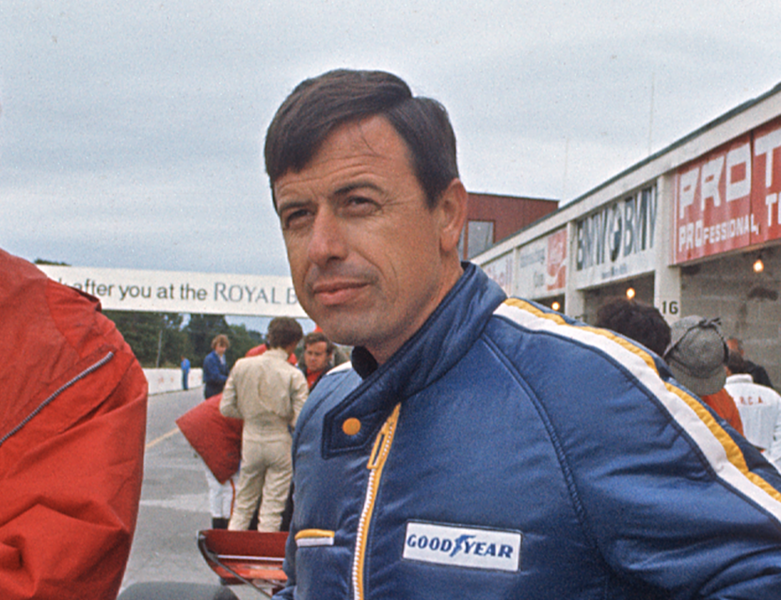
by William Neely
Anybody who knew Leo Mehl when he was attending engineering school at West Virginia University and washing dishes in the dining hall to pay for his meals would have told you "now, there's a kid who's going places." They had no idea how far. Example: Few people, if any, have achieved the level of success in motorsports as Leo Mehl. Granted it may be a bold statement, but let's look at the facts:
Mehl was instrumental in helping change the image of The Goodyear Tire & Rubber Company from one of a highly-conservative corporation into one considered a top-flight technical firm. In the years between 1974 and 1996, which, by the way, was exactly Mehl's tenure as director of racing, Goodyear was active in every form of motorsports imaginable, winning more than 80 percent of the races in which they were involved. Worldwide. Mehl was fortunate to have been there during that era. Goodyear was even more fortunate.
"If it raced, Goodyear wanted to participate," he says. "We were in everything from NASCAR to Indianapolis to dirt to drag racing to Bonneville to sports cars."
But his first job with Goodyear was not all that glamorous. "It was in the old, and I mean old, factory, so we can evaluate you,' they told me. It was like a scene from an old James Stewart movie," Mehl muses.
"After a month in production and then a month in research I wondered if I really had a job after all."
Mehl worked with the big Banbury mixers, which must have seemed like the windmills of Don Quixote. "The air was filled with carbon black. Every day I went home I was black," he recalls. The dark and drab surroundings surely felt more like a coal mine than a major tire factory.
Early in May of 1963, something happened that was to change his life forever. Not to mention all of motorsports. A. J. Foyt called Goodyear and asked them to bring some of their stock car tires to Indianapolis, the hallowed grounds of arch-rival Firestone. Goodyear, by the way, had not been there since 1920.
They assigned Mehl to the task of finding some specially formulated bags of rubber that had eluded all of them. "They're over there somewhere," they told him. He found what they were looking for in the stacks of special compounds. Within a week, Mehl was in charge of the rubber for race tires. After all, he was the only one who knew where it was.
"About six months later one of the engineers came to me and asked if I was interested in going to a race," Mehl recalls. "I said I would be interested in doing anything that would just get me the hell out of here."
He went to the Atlanta 500 with one of the racing tire guys. Even though he was a youthful engineer, he felt very special as he roamed the pits with a trusty tire pressure and tread depth gauges. Two weeks later he went to Riverside, but this time as a full-fledged racing tire engineer. He was out of the labyrinth of Goodyear's aging Plant One forever. The rest is history -– an anthology of racing victories in the Indianapolis 500 and Formula 1 and Daytona 500. In fact, one could look in just about every major winner's circle around the world and find Leo Mehl. In 1967 he became manager of international racing and in 1974 he took over the entire show as director of racing for the world's largest rubber company.
Winning became an obsession with everybody in the Goodyear Racing Division, particularly in the director's office. "If we lost a race I'd go back to the office like a crazy man, even if it was only Thursday Night Thunder, he says.
"When we quit midgets, we had 46 types of tires in stock –- different tread compounds, widths, various tread designs. Every week we'd come out with a new tread pattern and the P.R. guy would do a news release that said Goodyear has developed the best tread design ever.' When it didn't work, we'd design another one and the guys downstairs would write no kidding, folks, this is the best ever.'
"It took both Goodyear and Firestone several years to determine that the compound was the main event," Mehl says. "The grip from the rubber itself is the major factor when you lose traction."
Shortly after Mehl retired from Goodyear, following the Daytona 500 in 1996, Indianapolis Speedway President Tony George asked him to come to Indianapolis and run the newly-formed Indianapolis Racing League. It took George a few months to convince Mehl, but he finally gave in and agreed to run the IRL, which he did until 2000. Now he goes to the speedway in May because they want him in Race Control.
"I go just to stay in touch. It's kind of nice going to a race and not being in charge of anything," Mehl says.
Speaking of his election to the Motorsports Hall of Fame, Mehl had this to say: "Drivers always give credit to their teams. Over a period of 30 years, my teams" had several thousand dedicated and skilled production, development, sales, public relations and service personnel. My Indy 500 experience was the same. I accept this honor on behalf of each one of them."
As a postscript to an amazing career, West Virginia University gave him a doctorate degree and placed him on a special committee in the engineering department. "You know, that doctorate is important to those guys in academia, and I really appreciate it. But I said "please don't call me Dr. Mehl."